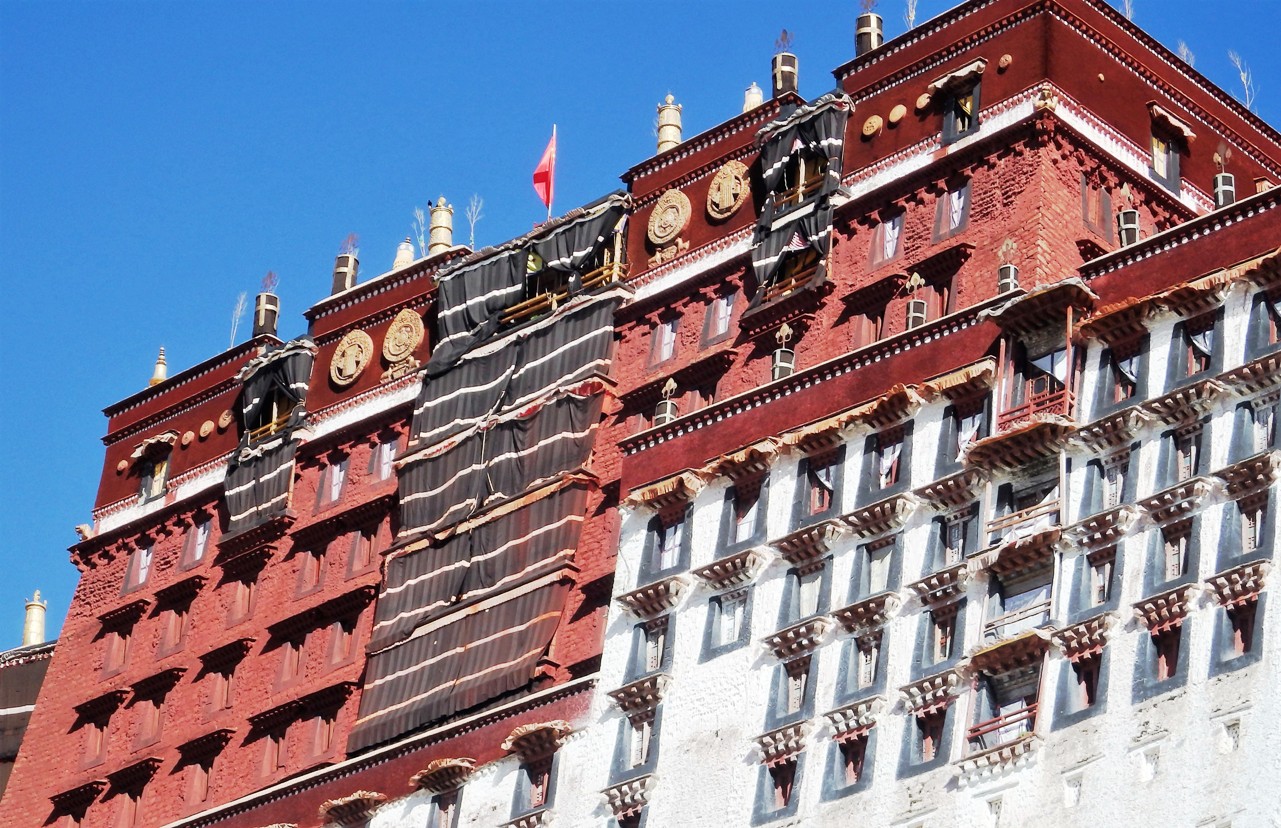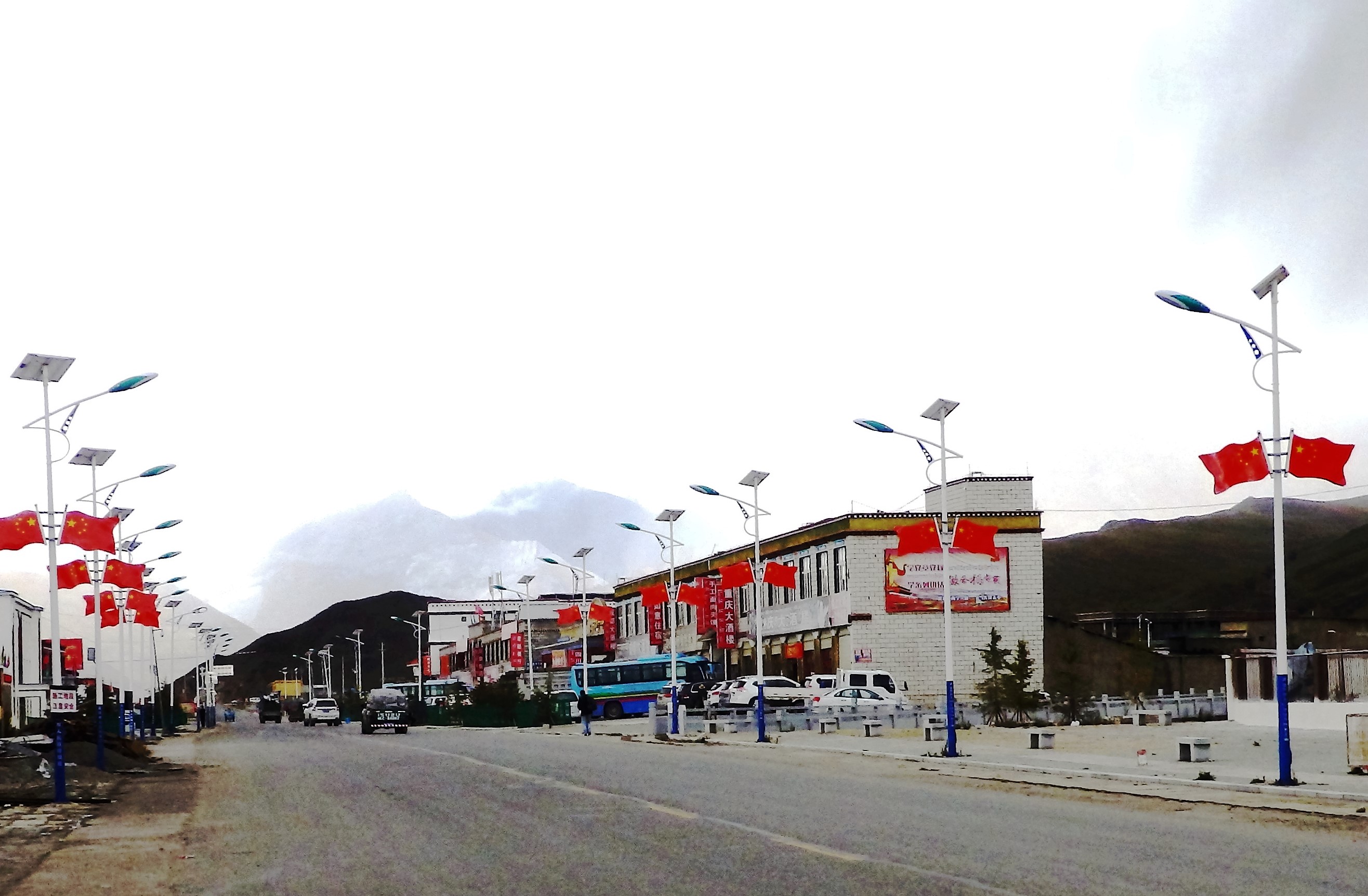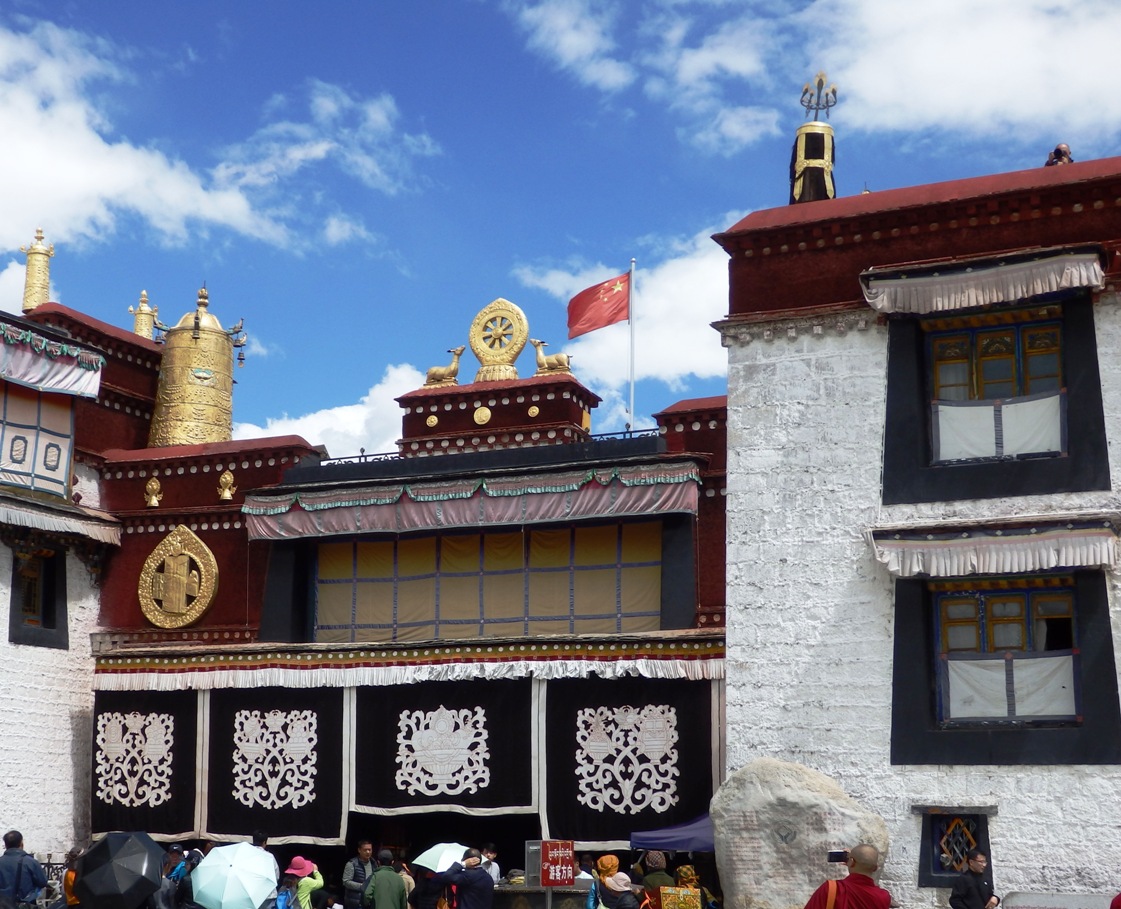Tibet continues to be an enigma to all visitors. My two visits have been no different. One sees massive Chinese investment in road and railway infrastructure. Modern skyscrapers are coming up at a frenetic pace to house migrants from the mainland. Yet, Tibet presents a sight of a state under foreign siege. A deceptive calm hides the underlying tension. There is no cheer in the air.
The story of Tibet is a saga of world’s apathy and indifference to cultural genocide of Tibetan Buddhism. Brutal decimation of an ancient, rich and peace-loving culture by ruthless China has been ignored nonchalantly.
China annexed Tibet in 1950. Although the estimates vary considerably, it is believed that up to one million Tibetan natives have been killed by the Chinese to suppress their demand for freedom. As the Tibetans are highly religious by nature, the Chinese have methodically targeted their places of worship and learning with a vengeance. Over 6,000 monasteries have been destroyed or ransacked. Damage done to Tibet’s relics, heritage and architecture has been truly horrendous; and beyond redemption.
 Chinese flag over Potala palace.
Chinese flag over Potala palace.
Tibet has been amalgamated in China as Tibet Autonomous Region (TAR). It is autonomous only in name; the Chinese government exercises total and unbridled control. The locals have no say. Even though TAR has an ethnic Tibetan as the Chairman, he is only a titular figure. He is subordinate to the Branch Secretary of the Communist Party of China (the real power wielder) and he is always from the Chinese mainland. Wu Yingjie, a hard-nosed Han Chinese from the Eastern region of China is the current appointee.
There is minimal interaction between the Chinese and the natives. The Chinese behave like the rulers and treat the natives with disdain. The Hans from the mainland China occupy all senior government posts and are running prosperous businesses. They enjoy a much higher standard of living and strut around like rulers, demonstrating all the trappings of an occupation force.
On the other hand, the Tibetans are treated with suspicion and have been condemned to menial jobs. Their condition is worse than that of the slaves of the olden days. All janitors, sweepers, load carriers and labourers are Tibetans. Some manage public toilets to make a living. Many peddle in local stones and other produce. It is sad to see a once-proud community degraded to the status of bonded labour. Poverty continues to afflict most.
Chinese Sense of Insecurity
Despite 66 years of occupation, China has not been able to crush the Tibetan spirit for independence. On the contrary, grave atrocities committed through political and religious repression have strengthened their resolve further. The Tibetans abhor the Chinese and the Chinese know it. The Chinese sense of insecurity is evident from the fact that Google, face book, whatsapp and such other social media have been banned in Tibet. Here are some other indicators:-
• At Taklakot, foreigners are asked to disembark from the bus and spread out their luggage on the roadside for inspection. Policemen rummage through each item to ensure that no material relating to the Dalai Lama is smuggled into Tibet. Printed material is closely examined. Worse, visitors are asked to show all pictures stored on their cameras and cell-phones.
• Every street and building in Tibet is embellished with innumerable Chinese flags, as if to constantly remind the locals that Tibet is under the Chinese rule. Similarly, billboards read ‘Welcome to China’s Tibet’.
• Every house is mandated to fly the Chinese flag on the roof top; and its height must be more than that of the Tibetan prayer flags that traditionally adorn all houses. Non-compliance is construed as an act of defiance of the state authority and is dealt with harshly. Punishment may include imprisonment for anti-national proclivity.
• Tibetans are denied passports. They can visit the Chinese mainland but cannot travel abroad. They are captives in their own country. China does not want them to interact with the world, lest their atrocities get exposed.
• Foreign visitors are not welcome in Tibet. Every tourist bus is accompanied by a policeman during travel in Tibet. He ensures that the permitted route is diligently followed. No deviations are allowed. Contact with the locals is discouraged. Military areas, police posts and even armed guards cannot be photographed. Yes, Tibet is a police state.
• Local authorities regulate the number of monks that a monastery can accommodate. Monks need official permission to visit other monasteries in large numbers. Armed soldiers invariably accompany them to monitor their activities.
 Road Embellished with Chinese Flags, Shigatse
Road Embellished with Chinese Flags, Shigatse
Although the Tibetans are wary of expressing their views openly, they never fail to express their gratitude to India for giving asylum to their temporal head and millions of other Tibetan refugees. A middle aged vendor woman shoved a handful of walnuts in our hand, as if to say ‘thank you’.
The Panchen Lama: a Chinese Lackey
Traditionally, the Panchen Lama is considered second to the Dalai Lama in hierarchy and plays a critical role in selecting the next Dalai Lama.
After the escape of the current Dalai Lama to India in 1959, Panchen Lama Choekyi Gyaltsen sided with the communist China and supported suppression of the 1959 rebellion. However, by 1962, he was a disillusioned man and accused China of smothering Tibetan culture. He was imprisoned in 1964 and subsequently kept under house arrest. He died suddenly under mysterious circumstances at Shigatse in 1989. He was only 51 years old. Locals are convinced that he was poisoned by the Chinese.
A boy named Gedhun Choekyi Nyima was chosen to be the next Panchen Lama by the Dalai Lama and the then-incumbent abbot of Shigatse’s Tashilhunpo Monastery. However, the boy went missing soon after his nomination and is untraced to date. It is alleged that he is still being held in captivity at an unknown location in China. In his place, the Chinese government conspired to select Gyaincain Norbu (son of two Communist Party members) as the 11th Panchen Lama. Most Tibetans do not recognise Norbu as the Panchen Lama and consider him to be a stooge of the Chinese.
Although the Panchen Lama traditionally lived in his official seat at Tashilhunpo Monastery in Shigatse, Norbu has chosen to reside in Beijing. Hatred for him amongst the Tibetans is so intense that whenever he visits Shigatse, the city is converted into a police fortress to ensure his security. Locals are coerced to send two persons per family to attend his public addresses and are even paid money for the same. Non-attendance is viewed seriously and can even invite police action.
The Chinese Malevolence
China has been adopting a three pronged approach to ensure total integration of Tibet – demographic offensive, obliteration of Tibetan identity and undermining the standing of the Dalai Lama.
Tibetan population consists of three broad ethnic groups – nomads, agriculturists and urban dwellers. Whereas the demographic make-up of the first two groups remains largely undisturbed, it is the third ethnic group that is undergoing a worrisome change with the massive influx of Chinese migrants. The Chinese government considers demographic swamping to be the ultimate solution. It is feared that the Han population will overwhelm the locals in the next two decades.
As the Chinese consider the knowledge of Mandarin to be essential for building national cohesion, the Tibetans are compelled to learn Mandarin. As a result, the local Tibetan language is being allowed to die.
Secondly, having failed to crush the ethnic pride of the Tibetans, China has been systematically targeting symbols of Tibetan uniqueness. Recent demolitions at Larung Gar Buddhist Academy and Jhada Gon Palden Khachoe Nunnery are symptomatic of the Chinese efforts to subvert the local culture. Larung Gar is said to be the biggest Tibetan Buddhist institute (academy and monastery) in the world and is keeping the Buddhist knowledge alive. Under the garb of decongesting, it is attempting to curtail its influence.
 Chinese flag over a monastery
Chinese flag over a monastery
Finally, as regards the Dalai Lama, the Chinese government suffers from an acute phobia. It has forbidden referring to him as His Holiness. However, for the Tibetans, His Holiness the Dalai Lama continues to be the supreme head. They hold him in great esteem. When told that we were from India, a young hotel boy told us that his sole ambition in life was to visit India to pay respects to His Holiness. With moist eyes, he rued his helplessness to acquire a passport.
Having failed to win over the 80 year old Dalai Lama, China is waiting for his demise to install a pro-China boy as the next Dalai Lama. It has already started manoeuvring itself to be in a position to have its say. Support of the lackey Panchen Lama will help considerably.
As per the past track record of China, if the followers of the current Dalai Lama select a boy living in Tibet, he will be eliminated by China and replaced by a loyalist boy. With the support of a pliable Dalai Lama, China will tighten its grip over the religious and spiritual facets of the Tibetan culture further. That shall prove to be the final and fatal blow. A rich culture will soon get wiped out and lost forever. Ominous signs are already discernible. The world must hang its head in shame for being a mute spectator to the ‘cultural holocaust’ in Tibet.